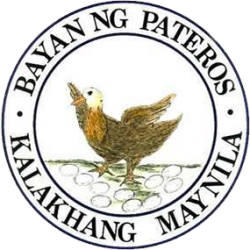Policy & Program Equity Analysis Protocol Background Our Pateros Public Schools (PPS)
Policy & Program Equity Analysis Protocol Background Our Pateros Public Schools (PPS) community defines equity as: fair, just and inclusive educational access and experience for all students. This definition commits us to identifying and addressing barriers and unhealthy cultures so that student belonging, participation and achievement is maximized. Focusing our equity lens on access allows us to ensure our students’ educational experiences are fully realized, with careful and deliberate consideration to individual dignity, needs and circumstances. Pateros Public Schools equity commitments • Standing up to injustice with school environments that are inclusive, respectful and tolerant, and confronting behaviors or actions by students, staff or guests that may be in conflict with these beliefs • Ensuring a faculty and School Board that is both trained and implements antiracist, culturally competent instructional environments and experiences • Teaching respect and acceptance through socially just learning curricula for students • Intentionally broadening our equity outreach by creating a culture where all stakeholders have a seat, a voice and a responsibility for change • Prioritizing the diversity of our workforce through recruitment, retention and “growing our own” strategies • Intentionally addressing equity when making program, curriculum and resourcing decisions • Guaranteeing dignified and equitable family engagement that ensures resources, communication and outreach is provided in languages, materials and manners that maximize the school-to-home relationship • Removing all barriers that overtly or covertly inhibit student belonging, participation and prosperity in their academic, athletic/activity and beyond-high-school plans – 2 – About the Protocol The PPS Equity Analysis Protocol was adopted to ensure explicit and intentional review when considering policies, programs or initiatives. According to Nelson and Brooks (2016), equity protocols provide a mechanism by which to: • eliminate inequities and advance equity • identify clear goals, objectives and measurable outcomes • engage community in decision-making processes • identify who will benefit or be burdened by a given decision by examining and mitigating potential unintended consequences • develop mechanisms for successful implementation and evaluation of impact Critical Reflection and Analysis To prepare for critical reflection and analysis, consider the following key framing questions: • What is the intent behind the policy/program being reviewed? Who is left out? (USC, 2017) • What are taken-for-granted assumptions about who and how this policy or program will impact equity? (USC, 2017) • What social constructions does this policy embrace? • Who benefits from the way things are and who does not? • What actions will redress the inequities we see in our policies, practices or programs? Equity Review Instructions: For each item, rate the extent to which the information being reviewed reflects the specific domain. Provide a rationale statement to support your rating. Propose a modification, addition or alternative related to the domain for improvement or enhancement. – 3 – DESCRIPTION Policy/Program Being Reviewed Department/School Lead Facilitator/Reviewer Date Additional Review Members Briefly describe the policy, practice or program being reviewed: – 4 – LEGAL & COMPLIANCE LENS Rate the extent to which the policy/program: To A Great Extent Somewhat Very Little Not At All Satisfies/meets relevant legal mandates (e.g. SPED/IDEA, 504, Title III/IX, Discrimination, Federal/State/other, etc.) Rationale/ Explanation: Recommendation or Consideration: – 5 – RESEARCH BASED Rate the extent to which the policy/program: To A Great Extent Somewhat Very Little Not At All Is informed by disaggregated data that intentionally addresses historically underrepresented and underserved populations Reflects principles and practices derived from scholarly research that will likely bring about effective outcomes for populations historically underrepresented and underserved Rationale/ Explanation: Recommendation or Consideration: – 6 – EQUITY-MINDEDNESS Rate the extent to which the policy/program: To A Great Extent Somewhat Very Little Not At All Positions participation and success of groups from racial, ethnic, and indigenous communities historically underserved or marginalized in school settings Ensures equity in language: -biased or stereotypical assumptions are not made about groups -groups from historically underserved populations are intentionally included Addresses disparities in treatment between and among groups (i.e. disproportionality in participation and outcomes) Rationale/ Explanation: Recommendation or Consideration: – 7 – INCLUSIVE PROCESS Rate the extent to which the policy/program: To A Great Extent Somewhat Very Little Not At All Intentionally includes voice and choice from internal and external stakeholders to inform and develop the policy and/or program (e.g. how did the process ensure multiple modes of input “at the table”, especially from those whose voices have been historically marginalized?) Rationale/ Explanation: Recommendation or Consideration: – 8 – COMMUNICATIVE Rate the extent to which the policy/program: To A Great Extent Somewhat Very Little Not At All Informs stakeholders about the rationale, purpose and scope of its application Articulates policy/program outcomes and expectations Rationale/ Explanation: Recommendation or Consideration: ACCOUNTABLE Rate the extent to which the policy/program: To A Great Extent Somewhat Very Little Not At All Specifies responsibilities and provides clear lines of accountability Includes clear, disaggregated measures of policy/program success with an intentional focus on equity-informed outcomes Maintains built-in safeguards and response protocols when outcomes fail to deliver desired results Rationale/ Explanation: Recommendation or Consideration: Adapted from: Great Lakes Equity Center References Great Lakes Equity Center. (2014). Policy Equity Analysis Tool. https://greatlakesequity.org/sites/default/files/20150105558_equity_tool.pdf Nelson, J., & Brooks, L. (2016, December). Racial Equity Toolkit: An Opportunity to Operationalize Equity. Government Alliance on Race and Equity. https://www.racialequityalliance.org/resources/racial-equity-toolkit-opportunityoperationalize-equity/ University of Southern California. (2017). Rossier Report: Protocol for Assessing Equity Mindedness. Center for Urban Education. https://cue.usc.edu/files/2017/02/CUEProtocol- Workbook-Final_Web.pdf

